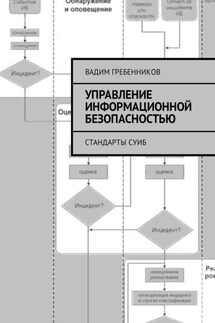IT Cloud - страница 20
Metrics can be system (for example, CRU, RAM, ROM) and application (service and application metrics). System metrics are core metrics that are used by Kubernetes for scaling and the like and non-core metrics that are not used by Kubernetes. Here is an example of bundles for collecting metrics:
* cAdvisor + Heapster + InfluxDB
* cAdvisor + collectd + Heapster
* cAdvisor + Prometheus
* snapd + Heapster
* snapd + SNAP cluster-level agent
* Sysdig
There are many monitoring systems and services on the market. We will consider exactly OpenSource, which can be installed in your cluster. They can be divided according to the model of obtaining metrics: into those who collect logs by polling, and those who expect that metrics will be poisoned in them. The latter are simpler both in structure and in use on a small scale. An example would be InfluxDB, which is a database that you can write to. The downside of this solution is the difficulty of scaling both in terms of support and load. If all services write at the same time, then they can overload the monitoring system, especially since it is difficult to scale, since the endpoint is registered in each service. The first group to practice a pull model of interaction is Prometheus. It is also a database with a daemon that polls services based on their registrations in the configuration file and pulls labels in a specific format, for example:
cpu_usage: 2
cpu_usage {app: myapp}: 2
Prometheus is a mature product, it was developed in 2012, and in 2016 it was included in the CNCF (Cloud Native Computing Foundation) consortium. Prometheus consists of:
* TSDB (Time Series Satabase) database, which looks more like a storage queue for metrics, with a specified accumulation period, for example, a week, allowing hundreds of thousands of metrics to be processed per second. This base is local to Prometheus, does not support horizontal scaling, in the case of Prometheus it is achieved by raising several of its instances and sharding them. Prometheus supports data aggregation, which is useful for reducing the amount of accumulated data, as well as archiving the database from memory to disk.
* Service Discovery support Kubernetes in a box through a public API through polling PODs filtered according to the config on port 9121 of the TPC.
* Grafana (a separate product, added by default) – a universal UI with dashboards and charts that supports Prometheus via PromQL.
To return metrics, you can use ready-made solutions or develop your own. For the vast majority of system metrics there is an exporter, and for applied metrics, you often have to give your own metrics. Exporters are general and specialized. For example, NodeExporter provides most of the metrics, including those for processes, but there are two of them, and there are more specialized metrics. If you run Prometheus without exporters, then it will give out almost a thousand metrics, but these are the metrics of Prometheus itself, and there will be no node_ * prefixes in them. For these metrics to appear, you need to enable NodeExporter and write a URL to it in the Prometheus configuration to collect the metrics it provides. For NodeExporter, this can be localhost or the node address and port 9256. Usually, exporters specialize in product-specific metrics, for example:
** node_exporter – node metrics (CRU, Memory, Network);








